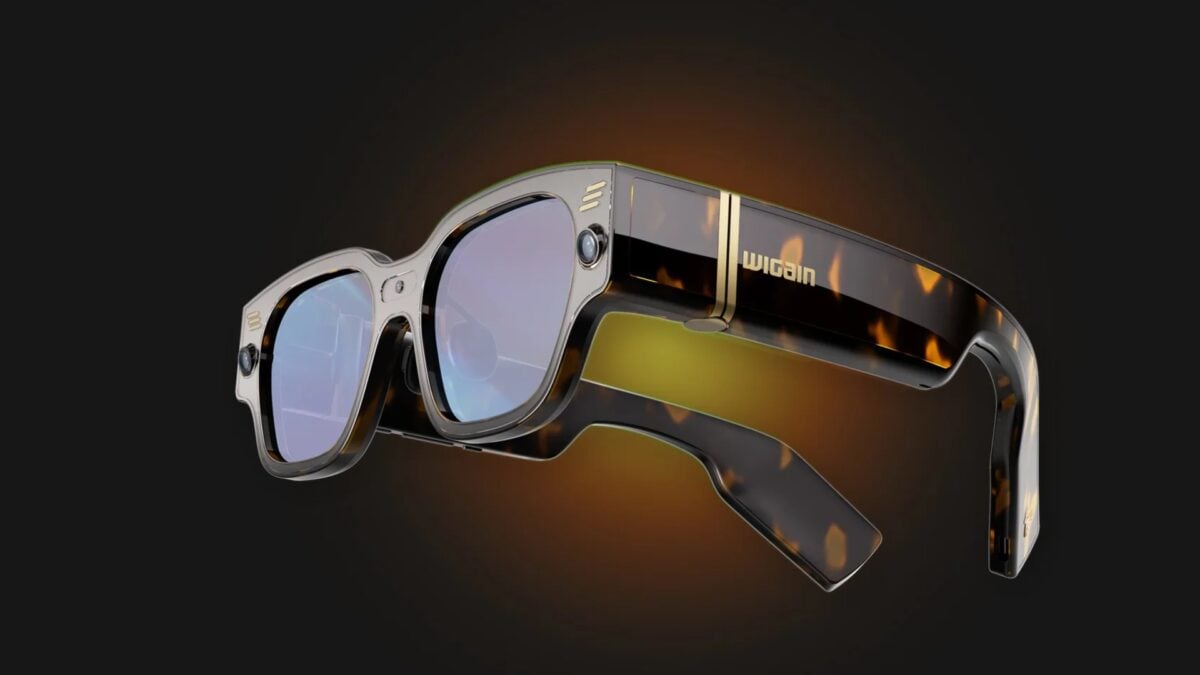I know I’ve said it 1,000 times, but AR glasses are hot right now, and arguably no one is more on fire than China. While the U.S. is patiently waiting for Meta to release anything even resembling itsprototype AR glasses, Orion, China seems to be making strides day by day. The latest example? These glasses with full-color optical waveguide lenses and 900 nits of brightness from aChinese company called Wigain. In plain speak, they’re full-color AR glasses with enough brightness to actually use outdoors in the real world. And the kicker here is that Wigain says they’re actually “mass-producible.”
The way Wigain talks about its glasses, they sound an awful lot like the Orion-based glasses Meta is slating for 2027, except they’re actually a real thing you can buy right now, or at least pre-order. Wigain says its AR glasses,called Omnision, have a 50-degree field of view, use Sony’s micro-OLED screens, and have an 800p resolution with a full-color display. They’re powered by Qualcomm XR2 Gen 1, too, which should make them fairly snappy. If you want more power, there’s also a Wi-Fi 7-enabled “station” that uses Gen 2 of the same Qualcomm chip. Wigain is claiming six hours of battery life—fairly solid for glasses that claim to do this much. Looks-wise, they leave something to be desired, but Wigain did manage to get the glasses down to a serviceable weight of 120 grams.
Don’t get me wrong, I’m skeptical of Wigain’s claims here, but the fact that it recently demoed the glasses in real life at anExpo in Osaka, Japan, and they have a real launch date and pre-orders is forcing me to take the Omnison glasses seriously. There’s also the fact that Wigain doesn’t seem to be alone in its success with pushing the ball forward on XR. China’s Xiaomi,as I recently covered, just unveiled a pair of XR glasses that pretty much kick theMeta Ray-Bans’ ass. They aren’t AR glasses, to be sure, but they double the Ray-Bans’ battery life, are capable of first-person video calling, and can allegedly record video for 45 minutes as opposed to the Ray-Bans’ three minutes, and they even have a mobile payment feature that uses QR codes and voice verification. Oh, and they cost about the same as Meta’s competitor.
Listen, I’m not a market analyst or anything, but if I were a betting man and you asked me to wager which country’s AR glasses are going to actually succeed from a technical standpoint, I’m going with China all the way here. And as someone who’s been covering technology for a while now, that story is as old as time—and not just relegated to XR glasses. EVs in China, for example, are not justincredibly cheap, but also arguably more advanced than the ones sold here in the U.S. On paper, Chinese automakers like BYD are winning by a mile, though the U.S. market is obviously a whole separate entity for political reasons, and vice versa. Either way, I, as a consumer, am once again on the other side of the coin, stateside, wishing that U.S. companies would take some cues from their Chinese counterparts. Because, damn, Wigain—if its glasses are the real deal—just beat Meta’s Orion to the punch.
Get the best tech, science, and culture news in your inbox daily.
News from the future, delivered to your present.
Please select your desired newsletters and submit your email to upgrade your inbox.
Local multiplayer has never been weirder than with two friends hooked up to separate pairs of AR glasses.
The lawsuit had been ongoing for many years and would have forced top-level executives to speak before the court.
The more these models 'think,' the harder to understand they become.
Sam Altman is not mad. Do not put in the newspaper that he got mad.
Finally, you can bring the joy of ad blocking into the wild.
Finally, I can get my eyeballs as close to TikTok as humanly possible.



 Motivational
Motivational 22 Jul, 2025
22 Jul, 2025 James Miller
James Miller